How to Train for Hiking & Backpacking Endurance
Last Updated: December 18, 2023
An efficient 12 week hiking training plan for busy lives
Hiking is a lifestyle, but it’s also an endurance sport; so how should you train for hiking and backpacking? For this article, we collaborated with lifelong hiker, physical therapist, and certified strength and conditioning specialist Dr. Simon Pratt to concoct a time-efficient, 12 week training plan with the goal of helping hikers improve their trail endurance.
Why train for hiking? When not under the stress of physical exhaustion, you are more relaxed and fully present to appreciate natural surroundings. You will have more fun and derive more joy from the experience. You can hike farther, see more in less time, and are less likely to become injured. Your schedule may not allow three weeks to complete the full JMT. But if you train for hiking, maybe you can do it in just two!
Whether you’re targeting a 10 mile day hike, or 25 miles per day backpacking, this hiking training plan can be customized to fit your schedule, itinerary, and endurance goals. It is designed to serve 9-5ers, informed by current academic literature, and will help you hike faster, longer, and more comfortably, while exchanging the least amount of time for the most amount of endurance benefit. All it takes is one day hike per weekend, plus three one hour sessions midweek. Specialized equipment is not required to train for hiking, and an access to a gym is merely recommended but not mandatory.
Lastly, this article represents an update to the hiking training plan first published and used by Alan Dixon to prepare for a strenuous 20-mile-per-day thru-hike of the GR20 in Corsica (seen throughout the photos). Many of Alan’s philosophies, especially the weekly training hike, were confirmed by Dr. Simon Pratt, and are still woven throughout this guide.
You make Adventure Alan & Co possible. When purchasing through links on our site, we may earn an affiliate commission at no additional cost to you. Here’s why you can trust us.
Daily Hiking Training Plan
- Sat: Long Day Hike
- Sun: Rest Day
- Mon: Rest Day
- Tue: Strength Training
- Wed: Aerobic Training
- Thu: Aerobic/Anaerobic Training
- Fri: Rest Day
Overview Of How To Train For Hiking & Backpacking
Simon Pratt: The goal of this hiking training plan is to (1) help you walk faster for longer without being as fatigued at the end of the day and (2) accommodate busy schedules via mid-week training sessions no longer than one hour per day. This program follows the principle of specificity which states, gains in physical performance are the greatest when individuals systematically exercise with the task in which performance improvements are desired1.
Backpacking and hiking require a unique combination of aerobic fitness and muscular strength. Both measures of strength, and to a higher degree, aerobic fitness are correlated with loaded carriage performance2. This means that both should be included in a backpacking training plan. Aerobic training alone or resistance training alone can improve backpacking performance, combining them can produce an even larger effect. When adding a day of loaded carriage exercise that effect can double1. Specificity, it turns out, is important!
Since the outcome we are trying to achieve is faster, longer hiking, the best way to measure the results of this program is to do a timed hike. This test can be flexible depending on your exact goals, but we recommend loading your backpack to 30lbs and timing yourself walking two miles on a familiar route1.
How To Train For Hiking: Daily Exercise Regimen
Saturday: Long Hike
Jump ahead to view the explanation ↓
- Complete a half or full length day hike, once per weekend
- Hike at conversational pace
- Wear the shoes and backpack you’ll use on the hike you’re training for
- Scale up training by hiking longer and/or farther, maintaining a conversational pace
- Scale down training by hiking slower
Tuesday Strength Endurance Day
Jump ahead to view the explanation ↓
- Weighted reverse lunges, 2-3 sets, 15-20 reps, 60%1RM
- Weighted step ups, 2-3 sets, 15-20 reps, 60%1RM
- Weighted single leg calf raises, 2-3 sets, 15-20 reps, 60%1RM
- If you don’t have gym-access, wear a backpack filled with heavy objects
- Scale up training by adding more weight, maintaining set/rep structure
- Scale down training with less weight, maintaining set/rep structure
Wednesday: Aerobic Endurance Day
Jump ahead to view the explanation ↓
- 30-60 minutes of running or hiking with a pack on
- Keep pace at 60-70% of max heart rate (conversation pace)
- Scale up training with longer or more frequent sessions, maintaining pace
- Scale down training with slower pace, intermittent walking, maintaining duration
Thursday: Aerobic or Anaerobic Endurance Day
Jump ahead to view the explanation ↓
- Uphill running, or speed hiking with pack, or stationary bicycle
- 2-4 minute intervals, 4-8 reps, 2-4 min rests
- Keep pace at 85-95%+ max heart rate (can only speak one to two words max)
- Add more weight if you don’t have access to steep hills
- Scale up training by increasing interval time or number of reps, maintaining heart rate
- Scale down training with shorter intervals, fewer reps, maintaining heart rate
- Note: beginner and intermediate hikers should repeat the aforementioned aerobic endurance training day instead of conducting anaerobic training. Hikers at the advanced or elite endurance level should begin to conduct anaerobic endurance training.
Customize The Hiking Training Plan To Your Current Endurance Level
Mobile users rotate device for full-width table
| Day | Beginner* | Intermediate** | Advanced*** | Elite**** |
| Mon | Rest | Rest | Rest | Aerobic |
| Tue | Strength | Strength | Strength | Strength |
| Wed | Aerobic | Aerobic | Aerobic | Aerobic |
| Thu | Aerobic | Aerobic | Anaerobic | Anaerobic |
| Fri | Rest | Rest | Aerobic | Aerobic |
| Sat | Long Hike | Long Hike | Long Hike | Long Hike |
| Sun | Rest | Rest | Rest | Rest |
*Beginner: A challenging hike is 3-6 miles and less than 2k elevation gain per day
**Intermediate A challenging hike is 6-10 miles and/or 2-4k elevation gain per day
***Advanced: A challenging hike is 10-20 miles and/or 3-5k elevation gain per day
****Elite: A challenging hike is 20+ miles and/or 5k+ elevation gain per day
Explaining the Long Hike Day
Actually hiking is the most effective way to train for hiking & backpacking
- Complete a half or full length day hike, once per weekend
- Hike at conversational pace
- Wear the shoes and backpack you’ll use on the hike you’re training for
- Scale up training by hiking longer and/or farther, maintaining a conversational pace
- Scale down training by hiking slower
Simon Pratt: This is the single most important day in the program. It’s game day! This is what you are training for, and specificity is critical. It bears repeating that adding a day of exercising with a backpack doubled the effect of resistance and aerobic conditioning alone1. It should also be the most fun day of this workout plan.
Explaining the Strength Endurance Day
The science behind why strength conditioning will help you train for hiking
- Weighted lunges, 2-3 sets, 15-20 reps, 60%1RM
- Weighted step ups, 2-3 sets, 15-20 reps, 60%1RM
- Weighted single leg calf raises, 2-3 sets, 15-20 reps, 60%1RM
- If you don’t have gym-access, wear a backpack filled with heavy objects
- Scale up training by adding more weight, maintaining set/rep structure
- Scale down training with less weight, maintaining set/rep structure
Simon Pratt: Runners will be familiar with the term running economy. It can be defined as the steady-state volume of oxygen required at a given submaximal speed3. This means that if you have a greater economy, you can run or walk faster at the same level of effort.
Strength training interventions have been shown to improve running economy even in highly trained runners3. Strength training increases type I and type II muscle fibers’ strength, resulting in less motor unit activation and more efficient muscle recruitment patterns to produce a given force, allowing a runner to run more efficiently at a given running speed3.
When carrying heavy loads, joint contribution shifts proximally up the kinetic chain from the ankle and knee to the hip4. As such, our strengthening day should target the muscles around these joints. Lunges will target the knee and hip; step ups will target the hips, and knee; and calf raises will target the ankle. We have picked these exercises because they mimic the movements you perform while hiking (remember that specificity thing?) but you can pick any exercise that targets these muscles, as long as the dosage is correct.
Before strength training it is important to warm up. You can do this by performing the same exercises with a smaller load or dynamic stretching. But this can also be a great opportunity for a bit more aerobic training.
To calculate your 1 Rep Max (1RM), use weights or load up a backpack and do the exercise until you can no longer perform it with good form. If you go over 15 reps, rest 3 minutes, add weight, and test again. There are many online calculators to estimate your 1RM based on how many repetitions you are able to do until failure.
Explaining the Aerobic Endurance Day
The science behind why aerobic exercise will help you train for hiking
- 30-60 minutes of running or hiking with a pack on
- Keep pace at 60-70% of max heart rate (conversation pace)
- Scale up training with longer or more frequent sessions, maintaining pace
- Scale down training with slower pace, intermittent walking, maintaining duration
Simon Pratt: Aerobic fitness is the most highly correlated fitness marker with loaded carriage performance2. Therefore, improving our aerobic fitness is a top priority for hikers. Aerobic fitness can loosely be defined as the body’s ability to take oxygen from the air and convert it to energy. We do this most efficiently when we are utilizing fat as our primary energy source. Fat contains more than twice the energy per gram, 9 calories, as both carbohydrates and protein, 4 calories each. Aerobic endurance training at low intensities is the best way to improve our ability to use fats as fuel.
Among innumerable other advantageous health benefits, endurance training leads to increases in, red blood cell volume, hemoglobin mass, skeletal muscle capillarization, and all of these adaptions allow us to get more oxygen to the working muscles which increases our VO2 max5. Mitochondrial density is also improved, and with this type of exercise the increases in mitochondrial density reflect an improved capacity to use fat as a fuel source5-6, the most efficient source of energy to use.
The best way to know if you are staying within your aerobic threshold is to monitor at what heart rate your lactate levels start to rise. Since most of us do not have access to this monitoring technology, a substitute is that your aerobic threshold will be around 60-70% of your heart rate max depending on your fitness level. Estimate your maximum heart rate using the following formula: 208-(0.7 x Age). Or simply use the Talk Test. If you can hold a full conversation with someone, but they can tell that you are exercising, then you are under the threshold. Both running and hiking with a pack are great options for this type of training. Hiking is more specific but both forms or exercise use largely the same muscle groups. If you enjoy one over the other, pick that one.
It is important to note that this pace is easier than most people would normally train. You may have to go into a brisk walk if running or slow down your hiking speed to stay under this threshold, especially when ascending hills.
Explaining the Anaerobic Endurance Day
The science behind why anaerobic exercise will help you train for hiking
- Uphill running, speed hiking with pack on or stationary bicycle
- 2-4 minute intervals, 4-8 reps, 2-4 min rests
- Keep pace at 85-95%+ max heart rate (can only speak one to two words max)
- Add more weight if you don’t have access to steep hills
- Scale up training by increasing interval time or number of reps, maintaining heart rate
- Scale down training with shorter intervals, fewer reps, maintaining heart rate
Simon Pratt: Anaerobic or high intensity training can also enhance a backpacker’s aerobic fitness. High Intensity Interval Training (HIIT) has gained popularity in recent years and for good reason. This type of training can give your aerobic and anaerobic fitness a boost and with less total training time. HIIT results in similar or even greater increases in VO2 max compared to more traditional aerobic training and is attributed to similar mechanisms including, capillary density, increased red blood cell volume and hemoglobin mass, all resulting in more oxygen getting to the muscles7. Repeated bouts of HIIT produce as much as 25–35% increases in mitochondrial content in as few as 6–7 sessions8.
As the name implies, anaerobic training also improves your anaerobic fitness. When training at higher intensities you rely more on carbohydrate oxidation and utilize more glycogen than you do at lower intensities of exercise8. This type of exercise increases key enzymes associated with glycogenolysis as well as increasing the buffer capacity of the muscles to protect against the drop in pH that comes from glycolysis without oxygen, the cause of muscle fatigue7-8.
Despite its benefits this type of exercise is most likely to cause an injury or result in overtraining. Extra aerobic training in place of anaerobic training is recommended for beginners and intermediate exercises. I will repeat, HIIT results are similar to more traditional aerobic training. One of the biggest benefits of this type of exercise for backpacking is that it will save you training time but if you replace it with another aerobic session you will not be missing out on much benefit, unless you frequently run from bears.
The best way to know if you are staying above your anaerobic threshold is to monitor at what heart rate your lactate levels rise sharply. Again, a good substitute for advanced technology is the Talk Test. This time however you should not be able to hold a conversation. Aim to only be able to say one or two words before taking a breath. It can be hard to get to this intensity on level ground so try to find a long hill to perform this exercise. Though less specific, using a stationary bicycle is the safest option for this type of training and a recommended way to start incorporating this type of training into your plan.
Jaeger Shaw: This hiking training plan does require any specialized equipment. However certain items may help improve or streamline your experience. From heart rate monitoring watches that work in the backcountry to comfier trail shoes, above you’ll find a few recommendations.
Effectively improve your trail endurance by packing lighter gear
Jaeger Shaw: If you want to train for hiking, get ready for a marathon, not a sprint. Endurance gains occur over the course of weeks-to-months. But there is an immediate way to help you hike farther, faster, and more easily – carrying lighter weight gear.
Compared to traditional backpacking gear, an ultralight kit will allow you to hike faster, longer, and more efficiently while also decreasing muscle fatigue and the likelihood of injury. These are all of the same benefits we hope to gain by training for hiking, only they can be achieved immediately by converting money, rather than training time, into results.
And the science backs this up. According to Impact of Load Carriage on Metabolic Efficiency (2022) by Tyson Ngatikaura et al., there is a linear increase between pack load and VO2, indicating a decrease in running economy at higher weights9.
To maximize weight savings, start by upgrading the big four – your tent, backpack, sleeping bag, and sleeping pad. With an ultralight version of each, the combined system will weigh roughly five pounds. Conversely, a traditional version of each of the big four will weigh 10-15 lbs, two or three times as much as their ultralight equivalents. Upgrading to ultralight apparel could save you another five pounds. Carrying more compact and nutritious food, as well as adopting a drink-on-the-go strategy could save you another five pounds in food and water weight. Pretty soon, you’re carrying 20 pounds less gear without any sacrifices to comfort!
Use GPS Software To Train For Hiking Hills
Jaeger Shaw: You may not have access to nearby mountains, but a majority of people live within reasonable striking distance of somewhere hilly (sorry Midwest). By reducing time spent commuting to scenic trails, you will have more time to actually train for hiking. It may not be as fun as summiting a mountain, but conducting your aerobic training or long day hikes at a local park increases the ratio of endurance-gains-vs-total-time-invested.
Any GPS software, such as GAIA GPS, can be used to plan hiking routes in local parks. Move way points around to optimize your route for elevation gain.
The two parks nearest to me are called Golden Gardens Park, and Carkeek Park. While neither are massive, they’re both ripe with surprisingly steep terrain, even by Seattle standards. A few minutes on GAIA GPS and I created a four mile long Carkeek Park loop with 800′ of elevation gain. Perfect for an hour-long aerobic session! A few more minutes, and I discovered that by lapping Golden Gardens beach-to-bluff trail 12 times, I could climb 3k elevation gain in just 3.7 miles.
If you live somewhere that is completely flat, in lieu of hills, you should conduct your aerobic training with added weight, by using a weight vest or loaded pack.
Conduct A Shakedown Trip As Part Of Backpacking Training
Jaeger Shaw: As we note, backpacking is an endurance sport and aerobic fitness is your best asset. But mastering gear, nutrition, trail rhythms, and camp skills is another way to move faster, safer, and more efficiently through the backcountry. Even the fittest ultra runner won’t have a good trip if their backpack is chafing, their stove doesn’t work, and their tent caves in overnight.
If you are training for a challenging upcoming backpacking trip, we strongly recommend conducting a shakedown hike first to make sure your entire kit is in working order. You don’t want to train for hiking for months, only to bail on the trip because your gear doesn’t work.
To do this, gather all of the gear you will use on the objective for which you are training, and take it out on a local overnight backpack. Pitch your tent, cook dinner on your stove, practice loading/unloading your pack, etc. Getting reps in with your kit will make everything easier and less stressful when it matters most.
If you can save 30-60 minutes per day by reducing the amount of time spent packing/unpacking, fussing with gear on trail, taking care of camp chores, and tent setup/break down, it is the equivalent time savings to hiking 5-10% faster.
Conclusion: How To Train For Hiking & Backpacking
Jaeger Shaw: We conclude with a few friendly reminders. (1) Listen to your body. If something hurts, don’t do it. If you suspect you may have an injury, consult a qualified professional. (2) Make it work for you. If you can’t maintain four days of training per week, that’s okay. Just do as much as you can or want. (3) Plan a challenging objective trip as motivation. Estimate how many miles per day and elevation gain per day you will be doing. Try hiking at that level at least once (though ideally more) before your objective trip. (4) Have fun! If you’re not having fun, change things up.
Thank you for reading our guide on how to train for hiking! We hope you find it to be effective, attainable, enjoyable, and that it leads to actual gains in your hiking endurance. Happy trails!
Full Citations
- 1. Knapik, Joseph J; Harman, Everett A; Steelman, Ryan A; Graham, Bria S. A Systematic Review of the Effects of Physical Training on Load Carriage Performance. Journal of Strength and Conditioning Research 26(2):p 585-597, February 2012. | DOI: 10.1519/JSC.0b013e3182429853
- 2. Robinson J, Roberts A, Irving S, Orr R. Aerobic Fitness is of Greater Importance than Strength and Power in the Load Carriage Performance of Specialist Police. Int J Exerc Sci. 2018 Aug 1;11(4):987-998. PMID: 30147827; PMCID: PMC6102195.
- 3. Balsalobre-Fernández, Carlos1; Santos-Concejero, Jordan2; Grivas, Gerasimos V.3. Effects of Strength Training on Running Economy in Highly Trained Runners: A Systematic Review With Meta-Analysis of Controlled Trials. Journal of Strength and Conditioning Research 30(8):p 2361-2368, August 2016. | DOI: 10.1519/JSC.0000000000001316
- 4. Wills, Jodie A.1; Saxby, David J.2; Glassbrook, Daniel J.1; Doyle, Tim L.A.1. Load-Carriage Conditioning Elicits Task-Specific Physical and Psychophysical Improvements in Males. Journal of Strength and Conditioning Research 33(9):p 2338-2343, September 2019. | DOI: 10.1519/JSC.0000000000003243
- 5. Montero D, Cathomen A, Jacobs RA, Flück D, de Leur J, Keiser S, Bonne T, Kirk N, Lundby AK, Lundby C. Haematological rather than skeletal muscle adaptations contribute to the increase in peak oxygen uptake induced by moderate endurance training. J Physiol. 2015 Oct 15;593(20):4677-88. doi: 10.1113/JP270250. Epub 2015 Sep 14. Erratum in: J Physiol. 2018 Apr 1;596(7):1311. PMID: 26282186; PMCID: PMC4606528.
- 6. Lundby, C. and Jacobs, R.A. (2016), Adaptations of skeletal muscle mitochondria to exercise training. Exp Physiol, 101: 17-22. https://doi.org/10.1113/EP085319
- 7. Atakan MM, Li Y, Koşar ŞN, Turnagöl HH, Yan X. Evidence-Based Effects of High-Intensity Interval Training on Exercise Capacity and Health: A Review with Historical Perspective. Int J Environ Res Public Health. 2021 Jul 5;18(13):7201. doi: 10.3390/ijerph18137201. PMID: 34281138; PMCID: PMC8294064.
- 8. MacInnis MJ, Gibala MJ. Physiological adaptations to interval training and the role of exercise intensity. J Physiol. 2017 May 1;595(9):2915-2930. doi: 10.1113/JP273196. Epub 2016 Dec 7. PMID: 27748956; PMCID: PMC5407969.
- 9. Ngatikaura, Tyson; Draper, Shane; Poulton, Lily; Sipple, Ally; Standifird, Tyler; and Creer, Andrew (2022) “Impact of Load Carriage on Metabolic Efficiency,” International Journal of Exercise Science: Conference Proceedings: Vol. 14: Iss. 2, Article 155.
Trackbacks & Pingbacks
Leave a Reply
Want to join the discussion?Feel free to contribute!

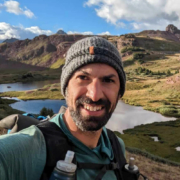
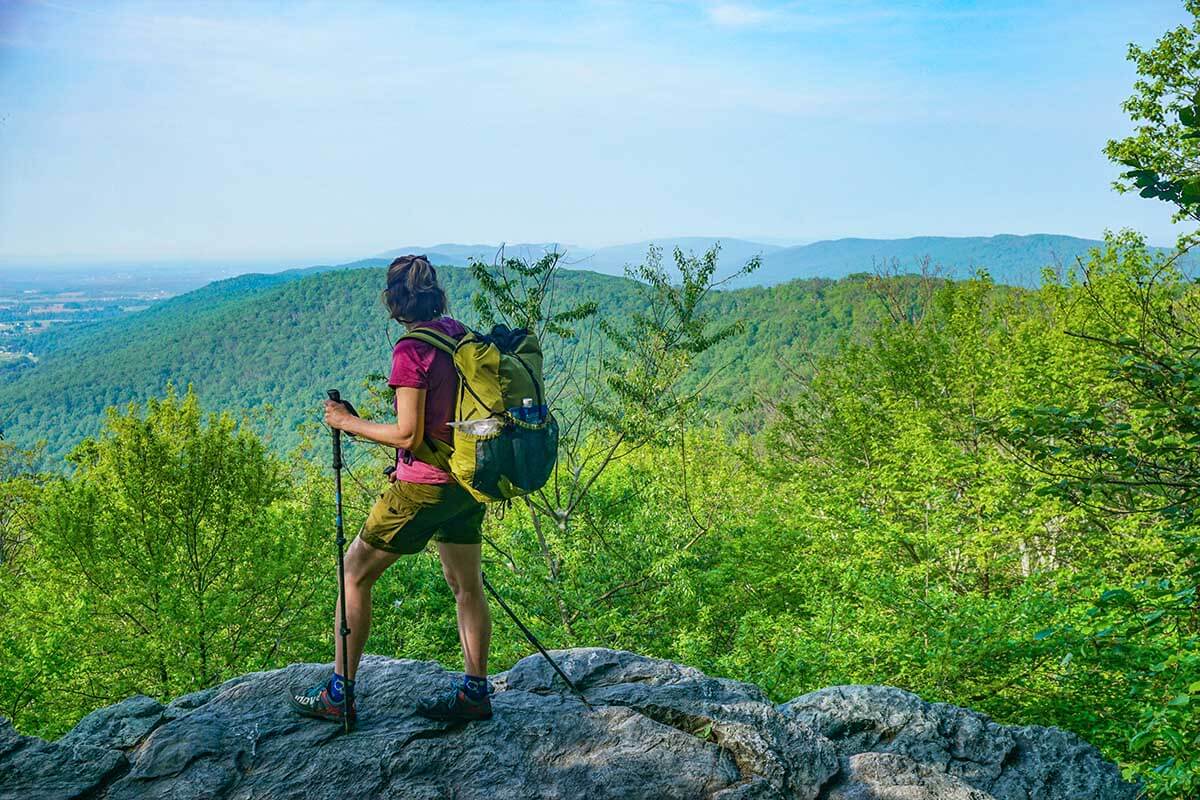
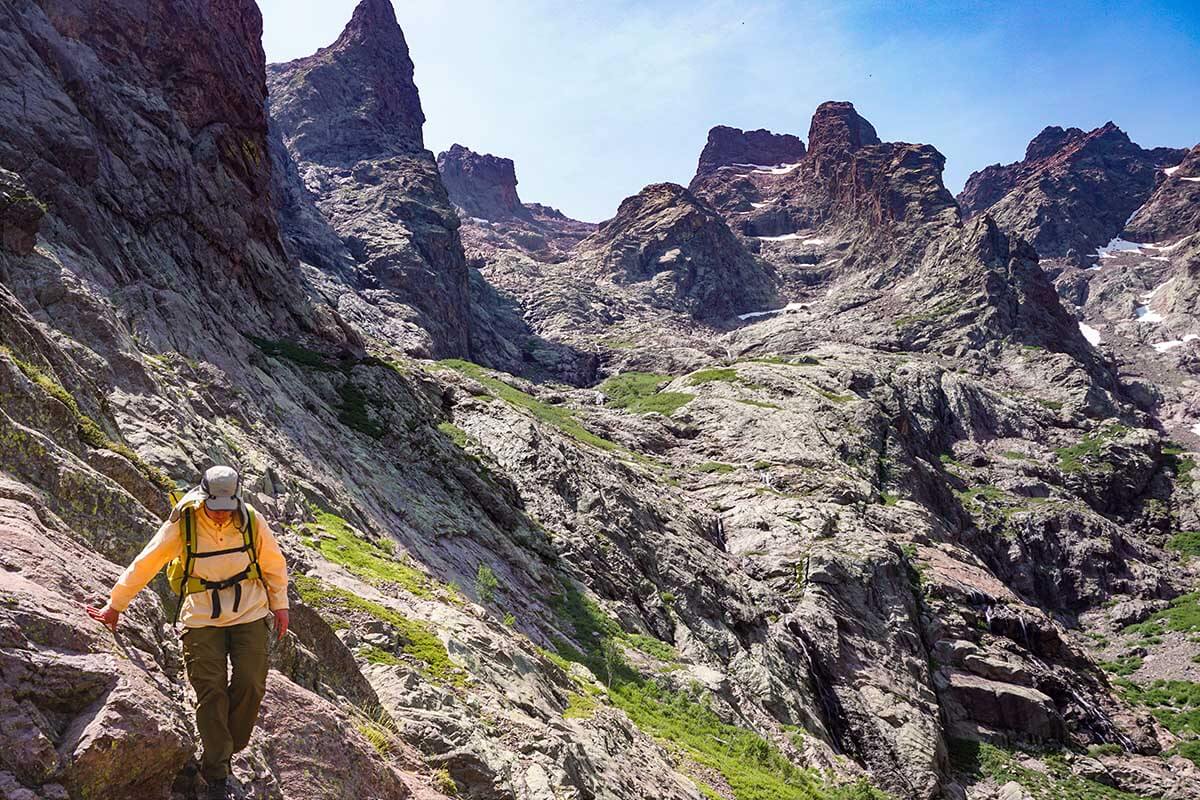
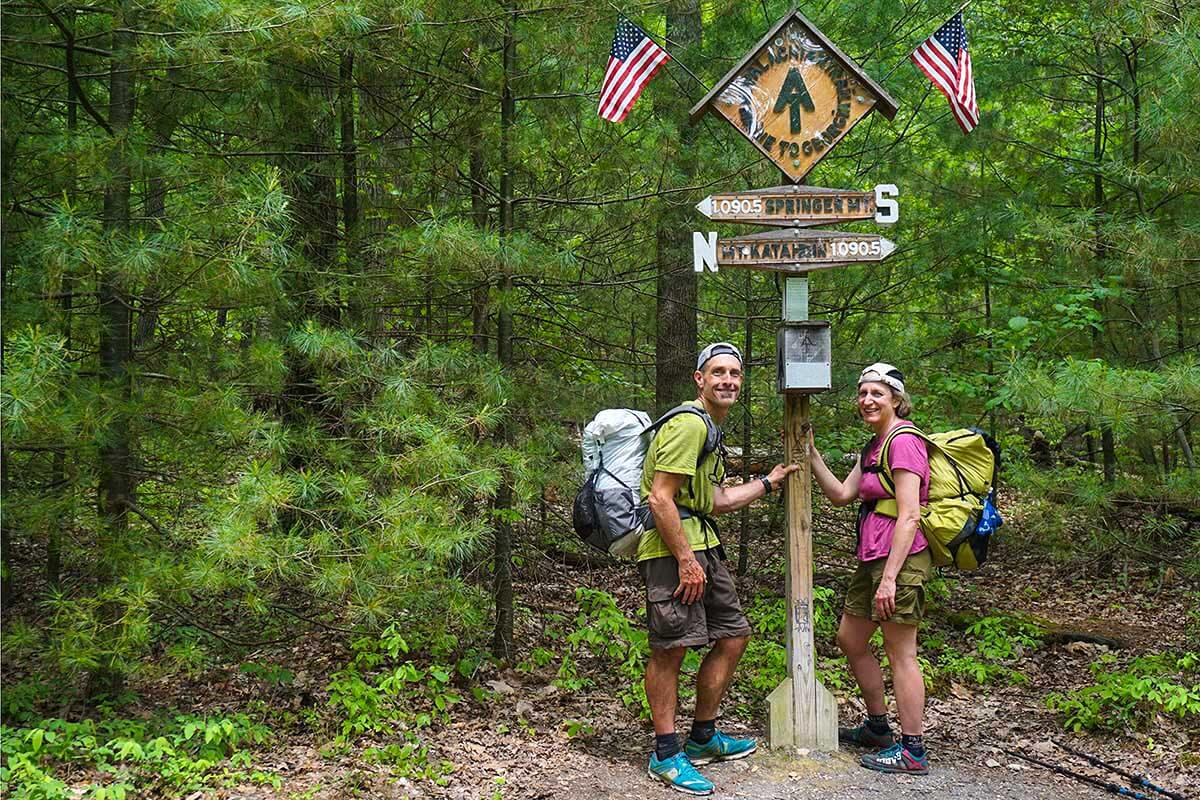
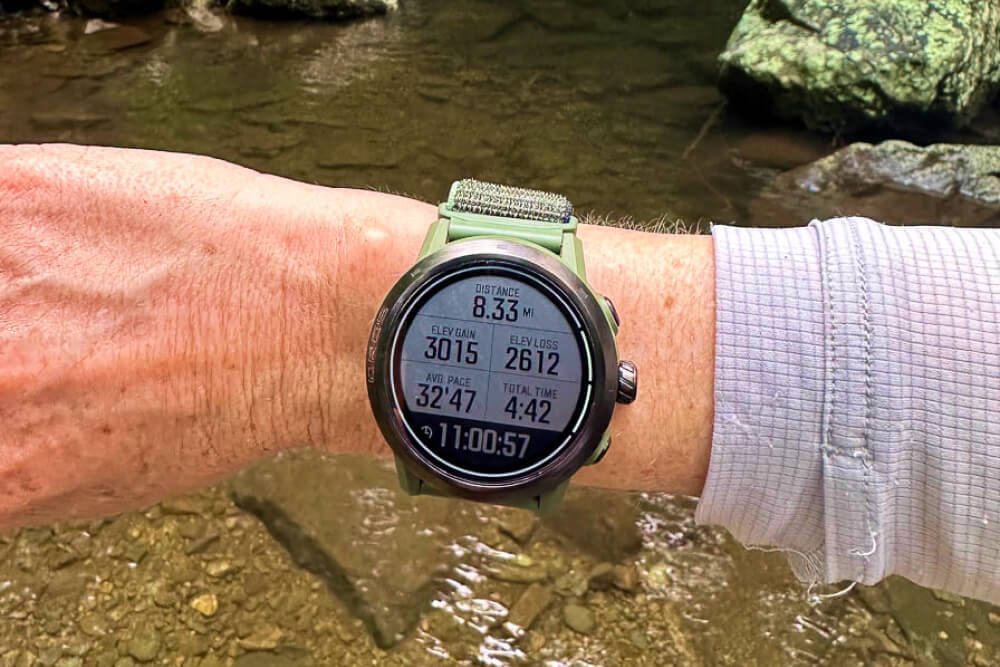
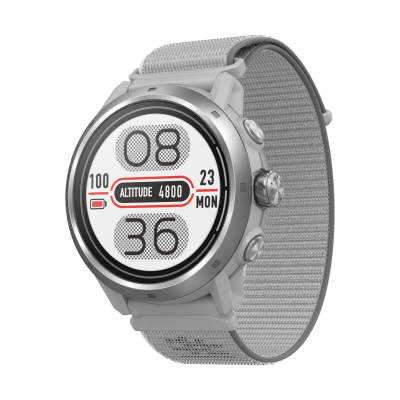
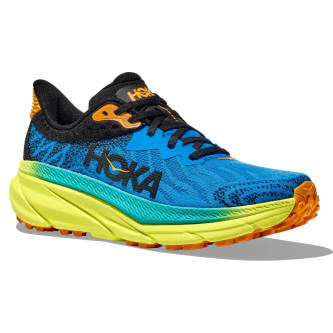
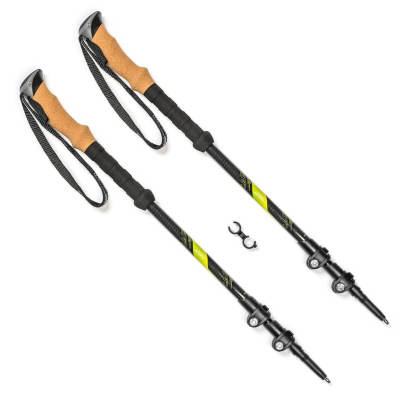

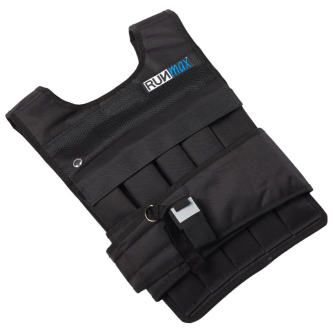
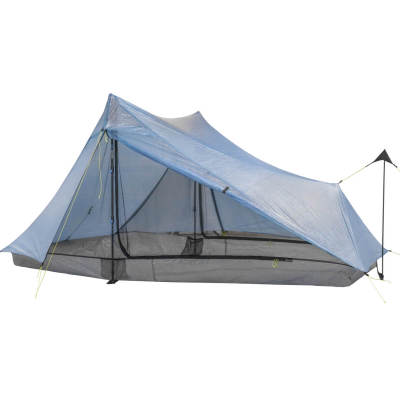
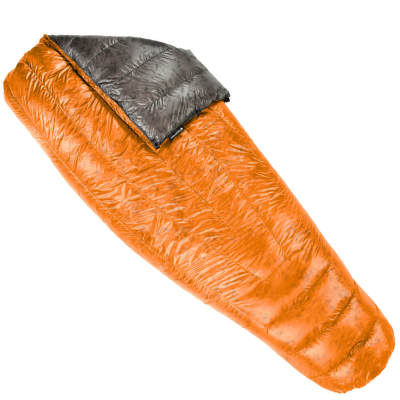
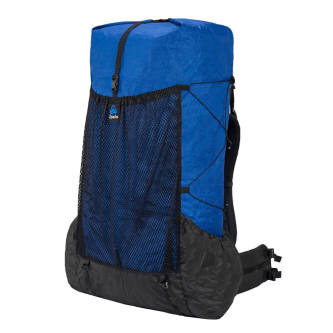

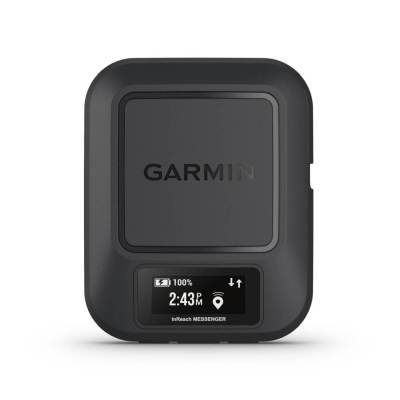
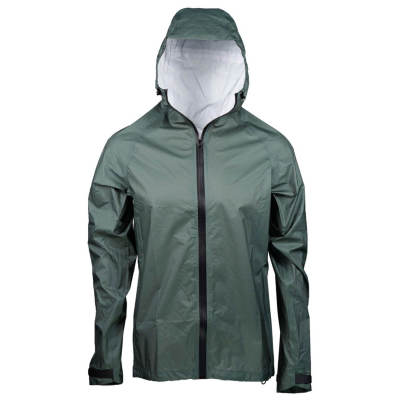
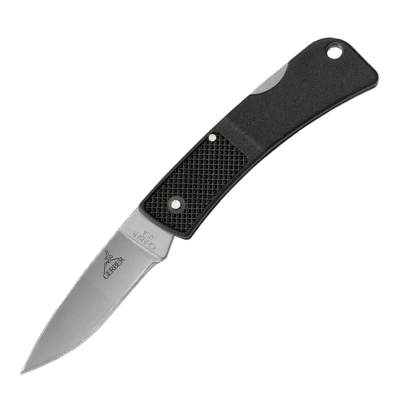

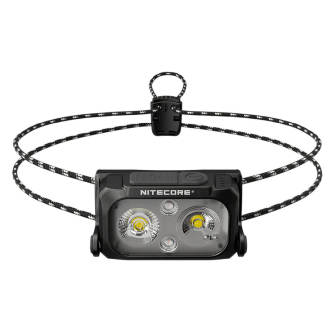
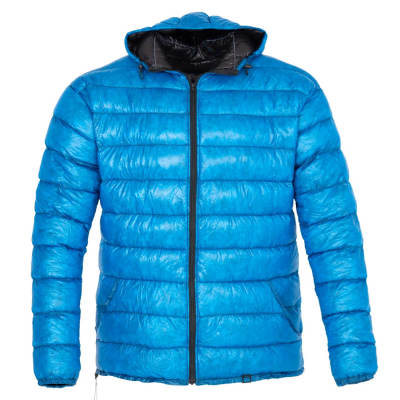
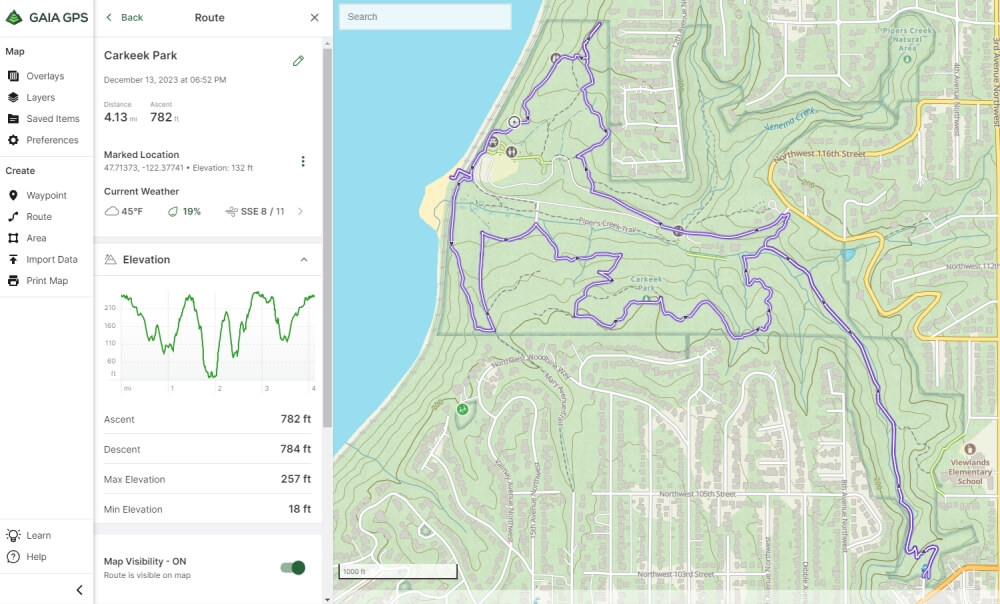
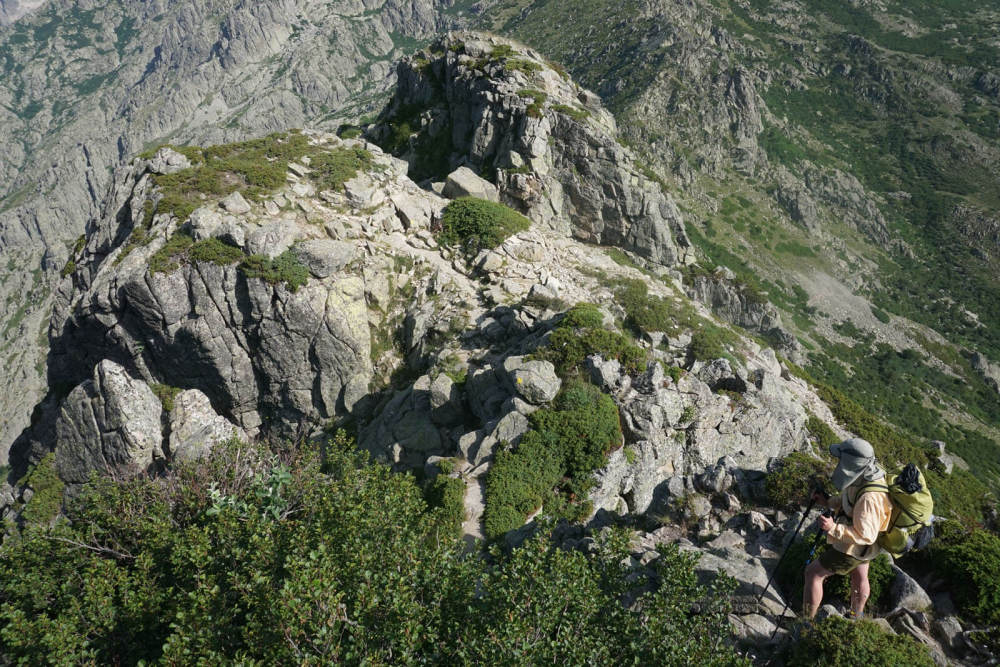
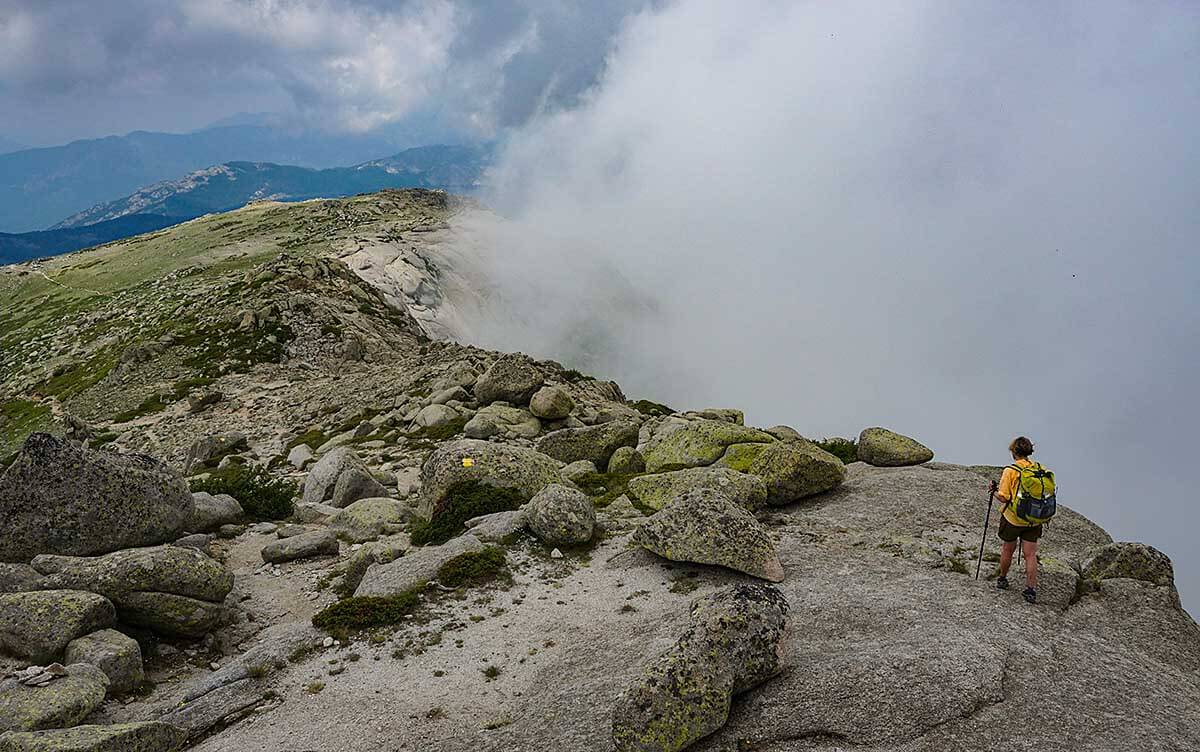
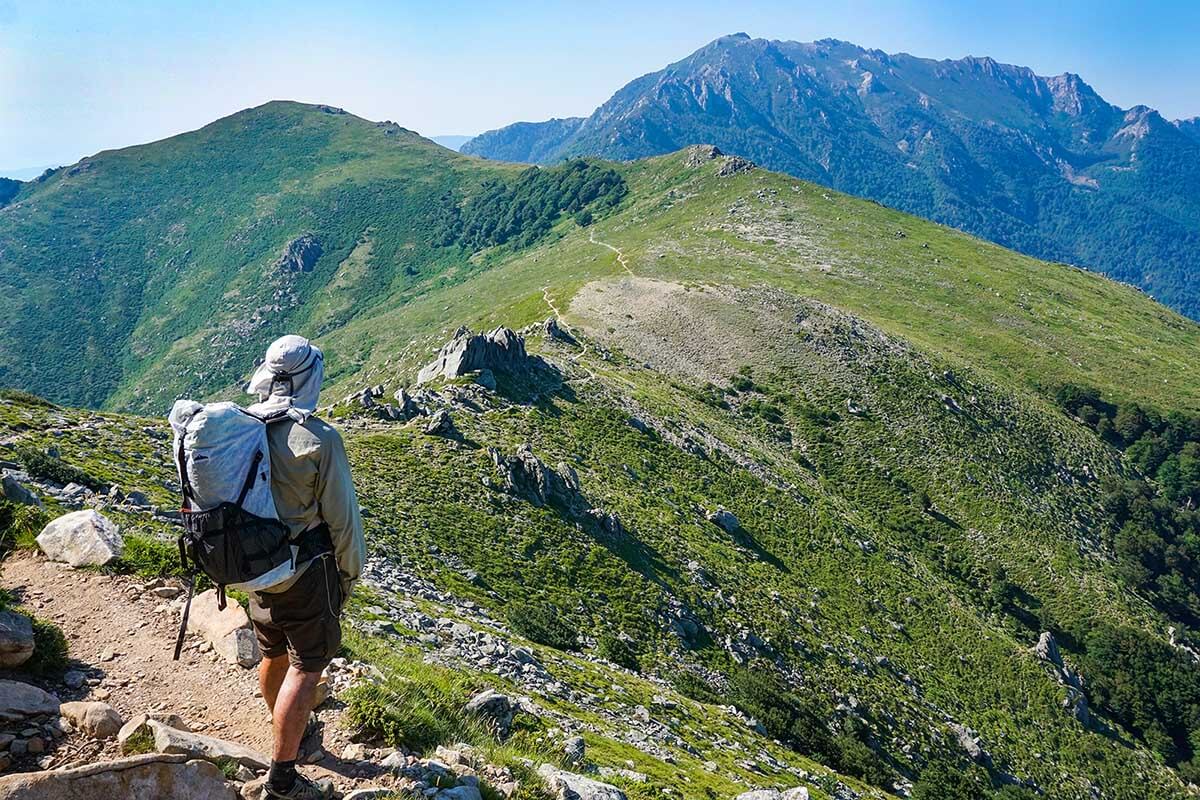


For adjustable training pack weight, I used 5 lbs (well now they are 4 lbs) bags of sugar. I put each one in a plastic grocery bag, wrapped it tight with packing tape. Way cheaper than a weight vest and you can move them from pack to pack. Just be careful in bear country. ;-)
Yup that works. Stay clear of ants an hummingbirds. -alan
Thanks for the article. Any advice if you are at near sea level and you need to train for high altitude? I know aerobic exercise is very important but any other advice will be great. Thanks.
James this is accurately covered in the training post:
Wishing you good training and a great trip. -alan & alison
Just wanted to point out real quick that your “View CMT Carbon Poles” button points to the wrong shortcut – takes you to the weight vest. (The text hyperlink earlier in the section is correct.) Coincidentally, these are the trekking poles I own, so I’m glad to hear they have endorsement from a seasoned hiker!
thanks ryan! fixed. best, -alan
Hi Alan,
Do you track heartrate and recovery time with a heartrate monitor or do you find pacing and elevation suffices for your needs? I’m considering using an HRM for training but it seems more popular with runners and haven’t heard of many backpackers using it to train, so not 100% if I should or not.
Thanks,
Jeff
Good Q Jeff, since this is hiking, I am generally not at a very high heart rate. As such, I do not track it for hikes. Not a fan of wearing the hrm belt and wrist hrm (e.g. fitbit aren’t accurate enough to be worth the effort). BUT when I am running, on the bike, or stairmaster I do track HR altho I generally look at the data after the workout. On bike I am tracking power, when running I am mostly focused on perceived level of effort on hills, and starmaster I am looking at my climb rate (thousands of feet per hour). Hope this helps, -alan
Hi Alan,
Do you supplement these hikes with any upper body workouts, or any other form of strength training?
Thanks and regards,
Jeff
Hi , this article has great advice and tips . Ive done a few weekends camping but only managed 10miles a day max before i am exhausted. Was hoping to do a trail soon but think i will postpone as i think 15miles a day is an important distance goal, and as you say be fit enough to enjoy and keep safe . So im out everyweekend now long hikes. I read recently on internet ??! Seemed legit, That a US army study suggested you did not gain too much extra by doing more than 1 long hike a week ,just increase that 1 long hike in distance and weight gradually, so i think your philosophy is bang on . Regards
Our pleasure Russ. Have a great year hiking! Warmest, -alan & alison
Nice write up!
As for the “Other Training”, how many times a week should you add these?
Steven, that is a very personal decision. Obviously more aerobic training and/or stair-master would be a big help. As a guess, two aerobic workouts would complement the hiking well. FWIW Alison exercises 6 days a week and I exercise 7. Hope this helps, -alan
Just to add to some of the comments on how to add weight to your backpack. I find adding water to my pack to be effective and comfortable to carry. I also like the ability to dump some weight while on the trail if needed and practice “Leave No Trace”. I’ve tried filling dry bags (with the roll top) but they leak at the seams. I’ve also added water bottles or additional hydration bladders, but I like to carry up to 20 lbs to prepare for backpack season so I’ve found ModGear’s water weight to be the best. It was too expensive to put 3x 3 liter hydration bladders in my pack just for weight. The 9L water weight is well sealed and has markers so I can easily adjust the weight on the trail without guessing or trying to convert liters to pounds.
Thanks Nathan. That does sound like a good way to add weight to your pack. And graduated weight measurements for the bag would be useful. Wishing you a great hiking season. Warmest, -alan
Alan,
I find your posts immensely useful even as an experienced backpacker. I found out the hard way too that to get conditioned for a hike, you need to walk!! I come from a weightlifting background which, as you might imagine, has little translation to long days of hiking. In fact all the “extra” muscle mass is really a metabolic liability. I’ll be employing a similar approach to yours to prep for the Foothills Trail this spring. Keep on being the undisputed heavyweight champ of un-pretentious lightweight advice!!
Need to get in shape for some tramping in New Zealand. Looks like we have a 14 mile 2500+ foot gain day ahead of us. I’m putting together a training plan to get us from our current “6 mile-1000 foot gain” dayhikes up to that shape in 6 weeks. As you suggest, we will be doing everything we can to reduce pack weight, getting a very early start that day and will pace ourselves. Lots of great ideas here. Thanks!
Joe, glad you found it useful. Wishing you some great tramping in NZ. Warmest, -alan
I like Phil Werner’s tip of a 25-lb charcoal bag. Easy to load in the pack and a more even load distribution than bricks or sand bags.
Yup, if you want a 25 pound load that works well. Agreed that it’s less of a pain in the ass than adding load weight by many other methods. And it’s certainly inexpensive and easily available. Tho if you want to carry less than 25 lbs, or redistribute in another shape, there is the opening the bag and handing the charcoal. My training loads are usually between 12 and 22 lbs. And for that I like the ease of the weight vest. I can quickly add or remove weight in 4 lb increments.
No right way tho. All good options. Warmest, -alan
This is a wonderful article, Very informative thank you!
My pleasure Nifa. Thanks for the kind words. Warmest, -alan
Hey Alan,
Love your site. Skurka turned me on to it, FYI.
As for training, how do you best combat the intense drainage feeling after an intense 1-3 day trip with lots of mileage and elevation loss/gain. Think Rae Lakes loop from Inyo in 3 days, or one 10K peak in the San Bernadino mountains a day for 3 days? 4K-5K gain each day.
Typically I try and just load up on electrolytes and water prior to, during, and after the hike, but I still feel hungover and dazed for about 2-3 days after. Normal? Thoughts? Physically fine otherwise…
Thanks for any insight.
-H
Good Q hunter. First I don’t think that nutrition and hydration are likely the cause. Please see The Best Hydration – Drink When Thirsty. My beast guess is that this is a training and alititude issue. The training you can handle by doing long hard days on the weekend. I have been know to do two laps up and back on the blue ridge for around 6-8K gain and loss. As for the altitude you’ll need to get into as good aerobic shape as you can. Stair master is good as is running hill repeats or just a hilly trail run. After that there really isn’t anything to do but go with the flow. If you do a 30 mile day with a lot of el gain and loss you are gonna be hammered. Finally, it will help if you can get even a few days at altitude (day hiking?) before you go into hammer mode with a pack on. That will take some of the sting out of the acclimatization alto it will take about 7-14 days to fully acclimatize to the High Sierra. Hope this helps. Warmest, -alan
Hi, I was wondering whether you backpacked the gr20 or stayed in huts?
Karl, we mostly camped out. I think we spent one night in a bed the Hotel past the Cirque de Solitude.
Hey there, I live in a completely flat area and at sea level, so I can’t do these hilly hikes to train. What can I substitute?
Alice, Good Q. You do have a number of options.
1) Stairwells on any multi story building. Multiple laps up and down is good. 2) Stadium stairs. Ditto. 3) Stair-master at a local gym, there is a conversion from floors to elevation gained [94 floors = 1,000 feet of elevation gain]. 4) Treadmill at a local gym. Put it on something like 10% to 15% grade and whatever speed you can hold. Don’t hold on with your hands or you’ll defeat the uphill purpose of the workout. 5) if you can get to a sandy beach, walking in sand with a reasonably heavy pack is also a good resistance workout [although not specifically directed at your uphill walking muscles]. I learned this from some dutchmen training for the Alps. They would go out and hike sand dunes with their packs on. Hope this helps. Good luck training and have a great year trekking. Warmest, -alan
Thank you! I really appreciate the response! I am sure I can find some stairwells somewhere :)
Alan,
I am planning a trip to Glacier National Park in just 5 weeks and need to be in better condition to hike 10+ miles each day. What is the best training regimen I can use in such a short time? Thanks!!!
Lexie, my advice is to do what you can but don’t over do it. That is don’t try and speed up the training progress as your risk of injury goes way up. Getting injured is the last thing you want to do before a big trip! So whatever your training plan would be for 12 weeks, I would do weeks 1 through 5. Week 6 will be walking in Glacier. And week 7 can be for when you get back.
And if you are not as fit as you intended to be: 1) have a realistic hiking plan based on your ACTUAL fitness, 2) get early starts and hike at a steady pace, minimizing long stops and other “wasted time,” and 3) and most important enjoy yourself! That’s the reason you’re going in the first place. Have a great trip, -alan
This is a GREAT article! Thank you. When I am not backpacking, I keep my pack loaded with a 40-pound bag of rock salt and hoist it whenever I get the chance. My driveway is hilly so even walking the dog keeps me backpacking-ready!
All good and fun! Best, -alan
Last year’s hike ended early when the climbing on a section of the CT left me ready to quit. This year I started in November at the gym doing basic lifting-bench,squat and deadlift. I’m also going to a local stadium once a week to climb stairs. This & bike commuting have been my conditioning for the winter.
Nice! I’m guessing you climb like a banshee this year. Have a great hike. -a
Just out of curiosity: How many times per week do you, on average, do the “Other Training” that you mention in the “The Weekly Training Schedule” section?
Karl, Alison and I train on average about 5 to 6 days per week. So 2-3 “other trainings.” Note that walking is super important for hiking. In the past, when I was an athlete training and competing at a national level, I found out the hard way that you need to train for walking if you intend to hike. Otherwise, even though you are in fabulous shape, you’ll get incredibly sore walking long distances with a pack on. Hope this helps. All the best, -alan
Why didn’t I find your website, sooner? So muck valuable information!!!
oops – muck = much
Great write up. I’m also in DC area and plan to hike the MD section the AT over a weekend in April. Just the article I needed to get me excited for training.
Dustin,
Sorry for the late posting of your comment. I am just back in the US after two weeks in remote areas of country and with absolutely no internet whatsoever. So glad yo found the article useful. Have a great hike this spring! All the best, -alan
Last summer at 61 I completed a 500 mi section of the PCT that included the JMT. I have an excellent fitness base from cycling but have not carried a pack in 25 years so I was a little intimidated, to say the least. I figured my best bet was to just start walking with weight so 4 months prior to departure I backed off on the cycling and began carrying my pack. Started with 15 lbs ( which hurt) and added a few lbs every week till i was up the 30. Only did 3 to 6 miles/day but I did it every day and I live at low flat elevation. Gotta work with what you got. The hike was an amazing success! Little to no physical issues. My milage average (12)was not high but I was in no hurry. The biggest factor in my success was a low pack weight, 12lbs base with bear can, so thank you Alan for your excellent gear advice. I’m now officially addicted, planning another 500 mile PCT section this coming summer. As Wayne says its easier to stay in shape than get in shape I still carry weight 3 to 5 days a week.
Awesome at any age Matt let alone 60+! You are an inspiration. Best -a
I’ve been playing with the current rucking fad for training. One way they add weight is using bricks wrapped in duct tape to soften the corners. A standard brick weighs about 4.5 lbs and they’re small enough that if your pack is handy you can put a couple in to weigh it down and you’ve spent $5 instead of the cost of a weight belt. The concrete caps are even more price efficient than bricks and fit nicely in a 20 liter day pack. (I put an old towel and a piece of anti-fatigue mat left over from another project in the bottom of the pack to better center the weight.)
Now that I’m over 60 I find it’s easier to stay in shape than to try to get in shape. So I hike locally and regularly with the equipment I’ll use on the trail. For the past 2 1/2 years I walk / hike about 120 miles per month. Even still trails often push my limits and only my strength of will allows me to easily push through those long elevation climbs. Great article. I have the AT in my cross hairs.
> Even still trails often push my limits and only my strength of will allows me to easily push through those long elevation climbs…
Got that Wayne! Many of us end up there more often we like. Goes with the territory. Have a great year hiking. -alan
I enjoyed reading your article and have incorporated much of your plan into my own training this season. I use a GPS to keep track of my progress and I can feel my endurance increasing. In the past I tried to hike everyday, but your system works much better. Thank you!
Glad it is working for you Andy. Hope you have some great trips this year. -a
Best article I’ve read about this topic for us “average” backpackers who have neither the time nor the ability (nor interest, frankly) in becoming ultra-endurance athletes just to get and stay in shape for a trek. Many thanks!
Thanks for the kind words Russel!